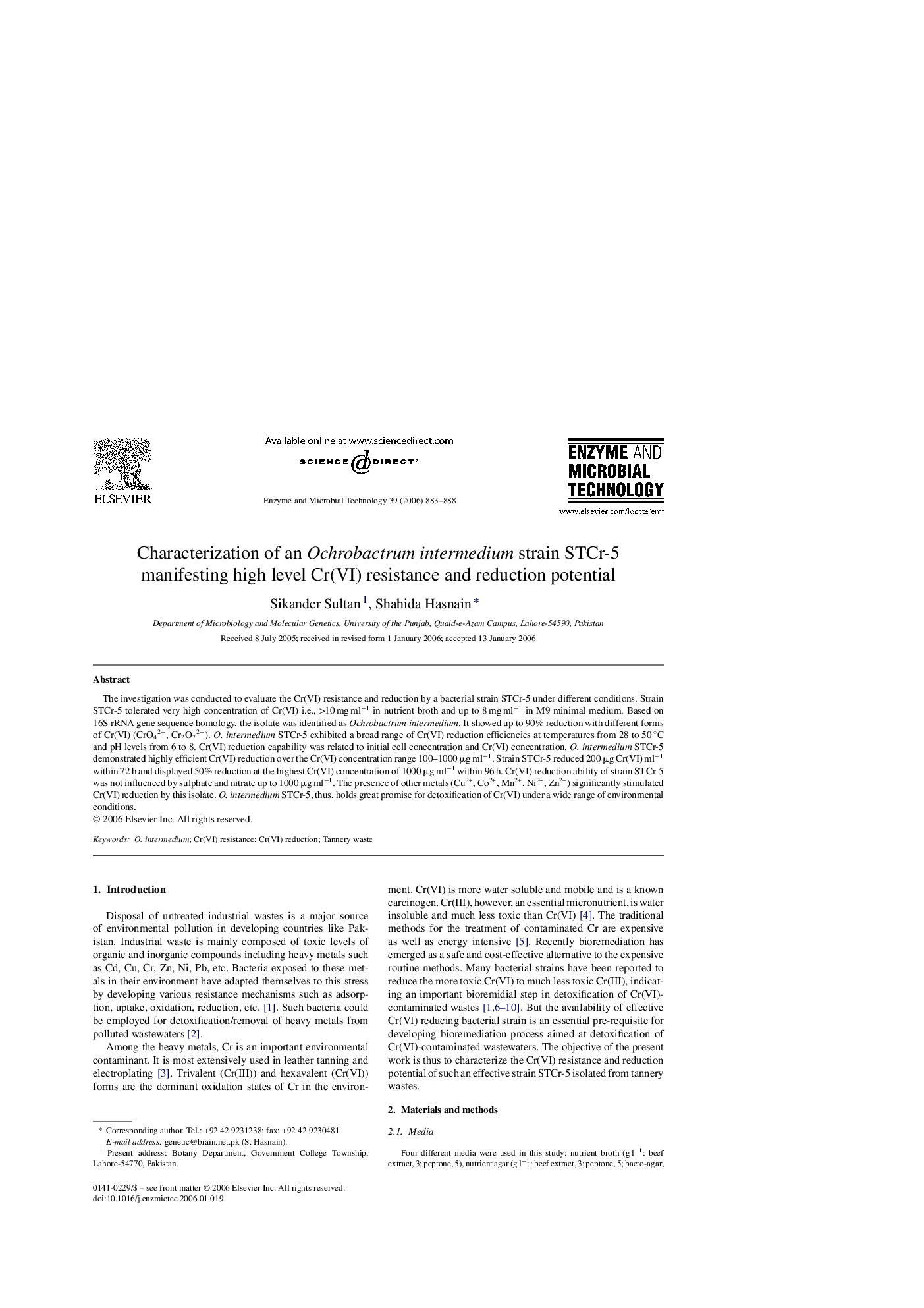| Article ID | Journal | Published Year | Pages | File Type |
|---|---|---|---|---|
| 18536 | Enzyme and Microbial Technology | 2006 | 6 Pages |
The investigation was conducted to evaluate the Cr(VI) resistance and reduction by a bacterial strain STCr-5 under different conditions. Strain STCr-5 tolerated very high concentration of Cr(VI) i.e., >10 mg ml−1 in nutrient broth and up to 8 mg ml−1 in M9 minimal medium. Based on 16S rRNA gene sequence homology, the isolate was identified as Ochrobactrum intermedium. It showed up to 90% reduction with different forms of Cr(VI) (CrO42−, Cr2O72−). O. intermedium STCr-5 exhibited a broad range of Cr(VI) reduction efficiencies at temperatures from 28 to 50 °C and pH levels from 6 to 8. Cr(VI) reduction capability was related to initial cell concentration and Cr(VI) concentration. O. intermedium STCr-5 demonstrated highly efficient Cr(VI) reduction over the Cr(VI) concentration range 100–1000 μg ml−1. Strain STCr-5 reduced 200 μg Cr(VI) ml−1 within 72 h and displayed 50% reduction at the highest Cr(VI) concentration of 1000 μg ml−1 within 96 h. Cr(VI) reduction ability of strain STCr-5 was not influenced by sulphate and nitrate up to 1000 μg ml−1. The presence of other metals (Cu2+, Co2+, Mn2+, Ni2+, Zn2+) significantly stimulated Cr(VI) reduction by this isolate. O. intermedium STCr-5, thus, holds great promise for detoxification of Cr(VI) under a wide range of environmental conditions.
